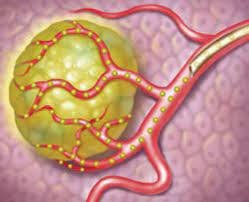The toolkit of an interventional radiologist is vast. From X-ray imaging and computer processing to wires, catheters and stents, interventional radiology equipment is vital to the understanding of various conditions. Additionally, the use of this equipment is what helps keep endovascular specialists at the leading edge of technology.
While the procedures and conditions of interventional radiology vary in scope and scale, the instruments used to treat them remain largely the same. Computer imaging allows endovascular specialists to guide various wires and needles to complete a minimally invasive alternative to major surgery.
Interventional Radiology Equipment
C-Arm
This is the primary imaging instrument interventional radiologists use to navigate arteries and veins to perform treatments. A C-arm is a system that uses X-Rays to produce live action images. ECCO Medical uses the OEC Elite from GE because of its high quality imaging and efficiency. Plus, the lightweight workstation allows for better maneuverability and mobility in the lab.
Needles and Wires
A needle provides entry through the skin and into the artery or vein. Threaded through this hollow needle is a wire that shows up via x-ray. Once inside the artery or vein, the endovascular specialist can then manipulate and steer the wire to its therapeutic destination. Wires can have many different kinds of coatings, lengths, flexibilities and shapes depending on the treatment.
Catheters
These flexible, hollow tubes are generally 2mm or less in diameter in the world of interventional radiology – tiny! The tips of these catheters can have additions and modifications made to them for specific purposes: lasers that break up plaque; balloons that open up blocked arteries; stent deployments; or therapeutic injections that treat enlarged prostates, uterine fibroids, or even cancer.
Stent
Made of metal, stents are tiny mesh flexible tubes that help keep arteries open to allow proper blood flow. The stent restores the flow of blood or other fluids, depending on location in the body.
Coils
In some cases, the object of a treatment is to stop blood flow (the opposite purpose of a stent). Coils can serve this purpose. These tools are typically made of platinum, but they can be made of other specialized materials as well. When advanced into a blood vessel, they wrap around themselves to create a plug inside the vessel, causing clot formation and cessation of blood flow.
Embolization Beads

Embolization is the act of cutting off the blood supply to a target. Endovascular specialists use this to decrease blood flow and cut off oxygen supply to a particular therapeutic target. Beads are commonly used to perform embolization to treat uterine fibroids, enlarged prostates, and even liver cancer. For cancer, these beads can be specialized to emit chemotherapy or radiation therapy, which can help shrink the tumors even more than just embolization alone. The beads vary in size and material depending on the size of the vessel and type of procedure. Common elements used to make beads include resin, glass, alcohol and polymers.





